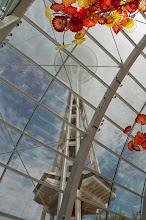Found via Twitter is Rinker's Opinion on this very question on Ruby Lane. My first question when I read the opinion article is who is Harry Rinker...well he has written several books on collecting, hosted the Collector Inspector on HGTV, has appeared on Oprah and Martha Stewart, plus numerous others. So I guess I should know who he is and I do remember those shows on HGTV, but I guess haven't paid much attention lately. If you would like more info about Mr. Rinker, here is his web site http://www.harryrinker.com/harry.html.

May 28, 2009 - 4:46pm
We asked Harry Rinker: Although you do not sell, do you think it is possible for a person to make a living selling antiques and collectibles? What are the keys to keeping an antiques and collectibles business in the black?
Here is his response:
It depends on how you define “make a living.” Most antiques and collectibles dealers are not interested in making a living, at least not in the sense of paying their bills plus a salary and benefits to themselves and others from the profits derived from their antiques and collectibles business. The vast majority of antiques and sellers are part-timers.
There are a large number of retirees who sell antiques and collectibles for the sole purpose of deducting their traveling and living expenses from their income tax, in essence enjoying a free ride from the government as they travel across the United States and abroad. They are not breaking the law, merely using it to their own advantage.
My initial advice to anyone who is thinking of entering the trade is don’t give up your day job until your making at least three-quarters or more of your day time salary. Add to this the concept that you should have six months operating capital in hand before starting.
Whether a person is in the antiques and collectibles business part-time or full time, the primary key to achieving black rather than red ink is to treat what you do as a business. It is not necessary to spend forty hours plus a week to qualify as a business. Some businesses models require ten hours per week, others sixty or seventy.
Start by developing a business plan. If you do this, you are ahead of the ninety-five percent plus individuals who sell antiques and collectibles who do not have or never heard of a business plan. This larger group is known as checkbook sellers. As long as their checkbook has more money in it at the end of the month than it did the previous month, they are happy.
If you would like the complete article, please go to http://blog.rubylane.com/node/921.
As my husband and I do agree with his opinion, there are antique dealers that we know who do support themselves in this business. They work hard...probably much harder than most of us do in a regular office day job. So, if you are planning a career in the antiques and collectibles business do keep your day job.







